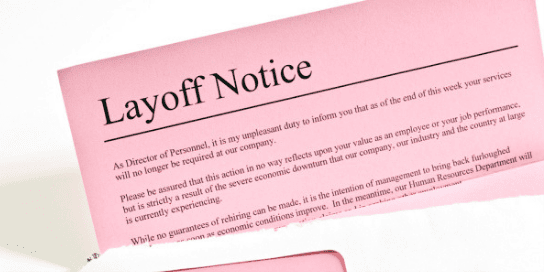Introduction:
Deferred compensation plans are complicated, overlooked, underused. Yet, these plans are one of the best opportunities to save A LOT on taxes. Like a nuclear power plant, they’re old, misunderstood, and some only remember the few events when they’ve melted down, but they have amazing tax saving power!
Because there’s little formal industry education, there’s a lot of client confusion. Also, many peers keep asking what the heck is “x” within this deferred compensation plan?
I love these plans but hate seeing disastrous client financial results without starting with eyes wide open.
Welcome to our series all about deferred compensation.
****PLEASE NOTE, this is an employer provided plan, this is not a plan an individual can open.
Four-Part Series:
Part One: Deferred Compensation Plans 101 – Cliff Notes
Part Two: Should I Defer My Compensation? How Do I Invest It?
Part Four: Deferred Compensation: Financial Planning Opportunities and Tradeoffs
Part Two: Should I defer my compensation? How do I invest it?
In Part One we covered the benefits, drawbacks, and some important dates to consider. In Part Two we answer whether you should contribute, how much, and how you should think about investing the funds.
First, a company or its plan provider may limit investment options, trading, timing, and maximum amounts, including when you can reallocate your investment choices within your account(s), transfer between funds, and change investment choices for future deferrals.
Let’s start with remembering why we are doing this again. TAXES! LESS TAXES. First things first.
- Tax arbitrage: Lower future tax rates versus today’s rates. Start here: What is your current federal marginal tax bracket versus in the future at retirement, or less work?
- Why? Without a forecasted lower tax bracket in the future, the key benefit disappears. Poof. So many never do this step, and cost themselves a lot.
- Step One: Each taxable income source for future years needs to be forecasted to determine the future marginal tax bracket(s): Social Security, required minimum distributions, taxable portfolio income, rental income, and other equity compensation (e.g., PSUs. RSUs, etc.) should be included. Map this out to see where planning opportunities are.
- Step Two: Financially model and map each year with the cashflow disbursements from deferred compensation. The goal is meeting cashflow needs, while keeping the marginal bracket as low as possible. Scenario analysis using Monte-Carlo analysis or at a minimum an excel spreadsheet is important to ensure you capture the growth in the value(s) of (each of) the account(s).
- Why? Without a forecasted lower tax bracket in the future, the key benefit disappears. Poof. So many never do this step, and cost themselves a lot.
- MEETing inflation with investments – Is a cash option the only option to have deferred income invested in? (that’s not optimal).
-
- Why not just cash as an investment? While a cash only investment option might still save you future projected taxes, if the deferred income doesn’t keep up with inflation, there’s less money, net of inflation, — even with the tax benefit.
- Example, Let’s say the funds are invested in cash with no yield for ten years. $75,000 is deferred today while in the 37% federal income tax bracket, versus the future when the deferred income is received at the 12% bracket. This saves a projected $18,875 in spread between the marginal brackets 10 years later. $75,000 X (37%-12%) = $18,875 (not accounting for the taxes saved without growth being taxed every year).
- However, at a 3% inflation rate without investing the funds, that $75,000 saved is worth $19,694 less in future dollars, after ten years, if the balance stayed in cash.
- A negative after-tax real rate of return. You LOST real money.
- Why not just cash as an investment? While a cash only investment option might still save you future projected taxes, if the deferred income doesn’t keep up with inflation, there’s less money, net of inflation, — even with the tax benefit.
How do we beat inflation with our investments?
- Supporting Concept #3: BEATing inflation with investments – Do we have investment options that give us the ability to beat inflation?
-
- Why? First, investing this money aggressively risks tax savings in the event of large investment losses. Most deferred compensation investment options mirror a company’s 401(k) investments. So, cash is usually not the only option. However, some clients inadvertently overconcentrate risk with matching contributions from their employer in their own stock, creating more risk.
- Start again by focusing on the primary benefit of tax savings versus investment gains second (read that again). Target a strategy where income in the future is at a lower tax rate than today versus shooting for investment gains. Gains may not be there when funds are withdrawn.
- Asset allocations may differ for each deferred compensation account time horizon, depending on when the funds are elected to payout, and if they are a lump sum, or stream of cashflow. Each allocation should also consider the client’s overall asset allocation with assets outside the plan too.
- Again, avoid company stock investments. More company stock exacerbates the credit risk the client is taking.
- Are bond only investments the “safest”?
- Some plans only offer a bond-only option to mimic a fixed income return. However, long-term real returns of bonds might be negative, if interest rates increase, or inflation rates rise, like we’ve seen recently.
- For example: Clients might have a “Moody’s” investment fund, where returns mirror the return/yield on certain long-term high-grade corporate bond; this exclusive investment option might not keep pace with inflation, or face a decline during a spike up in interest rates.
- Some plans only offer a bond-only option to mimic a fixed income return. However, long-term real returns of bonds might be negative, if interest rates increase, or inflation rates rise, like we’ve seen recently.
- Stock only investments to beat inflation, right?
- Taking too much risk, can create a drawdown right before income is received. Remember, the main goal is tax savings, and second keeping with inflation. In some cases, there’s limited flexibility with changing investment options, and very limited changes with disbursement dates. So, creating a traditional glidepath that you can change or outright control may be impossible.
- What about the risk of taxes increasing in the future or bankruptcy? Don’t I need to be in mostly equities to hedge these risks, right!?
- Taxes increase in the future, some proponents advise that you should only invest in equities, or a higher allocation to offset the possibility (key term) that income taxes increase, so greater returns offset the increased tax bill the thinking goes…
- Negative sequence of returns, But, what about a large decline right before assets are withdrawal? A negative sequence of return? Some plans have no option to make investment changes or limit them to once a year. Now, you have a lot less income. Do we really care about taxes?
- Bankruptcy risk means I need more investment risk (stocks) in this plan, and more bonds elsewhere, Some argue that the risk of bankruptcy and losing the total all together calls for the need to take more risk in the investments within the plan.
- If we just load up with stocks, and put fixed income in outside accounts what could happen? If the market tanks, the stocks will be down, and in the very unfortunate event the company files for bankruptcy your deferred compensation will be worth zip. Why have any bonds?
- A low probability should not overtake greater known variables, Over the total of all deferred compensation plans the probability of bankruptcy is low. So, why is bankruptcy Is this our base case? Why not consider the time horizon, and historical asset allocation risk/return profile which is known?
- If we just load up with stocks, and put fixed income in outside accounts what could happen? If the market tanks, the stocks will be down, and in the very unfortunate event the company files for bankruptcy your deferred compensation will be worth zip. Why have any bonds?
- Taxes increase in the future, some proponents advise that you should only invest in equities, or a higher allocation to offset the possibility (key term) that income taxes increase, so greater returns offset the increased tax bill the thinking goes…
- What about target-date funds?
- Market volatility and investment choice irrevocability or limited changes might make this an attractive option. However, the higher expense ratios between the asset allocation funds or target date fund and how to replicate these options with the other similar broken out investment options needs to be reviewed.
- Why? First, investing this money aggressively risks tax savings in the event of large investment losses. Most deferred compensation investment options mirror a company’s 401(k) investments. So, cash is usually not the only option. However, some clients inadvertently overconcentrate risk with matching contributions from their employer in their own stock, creating more risk.
Yes, all cash, or all stock investments can be chosen based on time horizon and total asset allocation of the client. But first and foremost, without at least forecasting future income investors set themselves up for marginal tax bracket Russian roulette. Get the layup first: less taxes.






